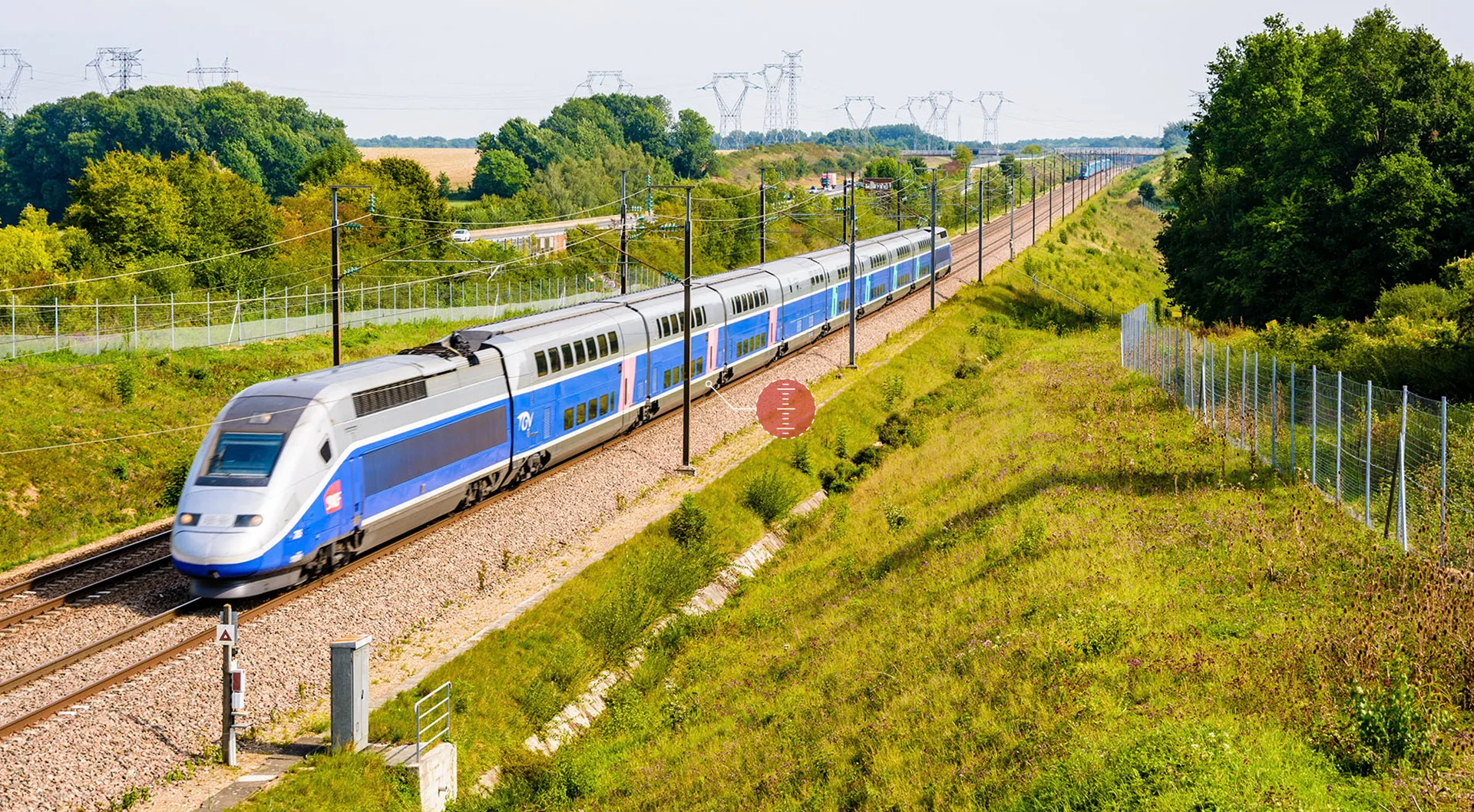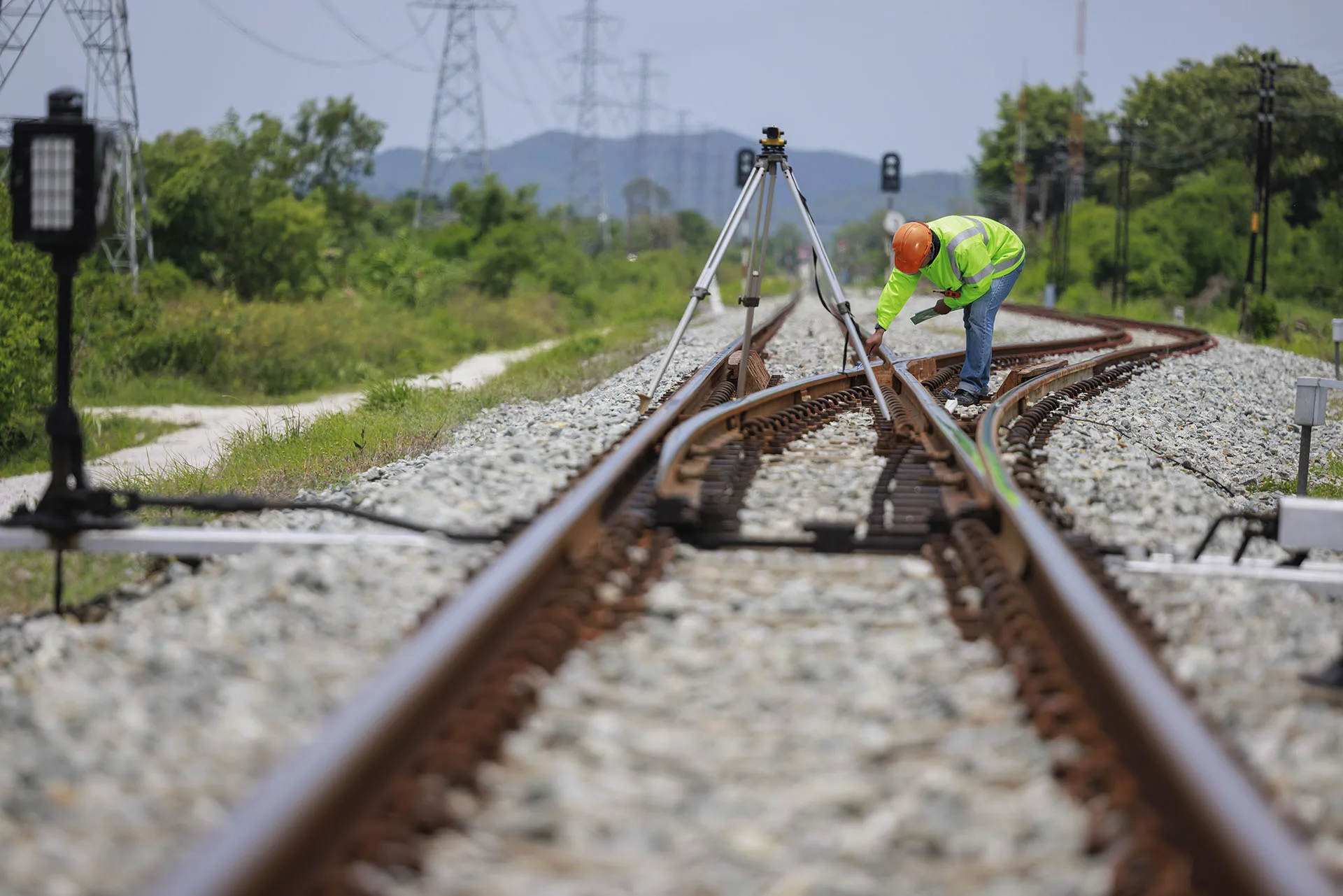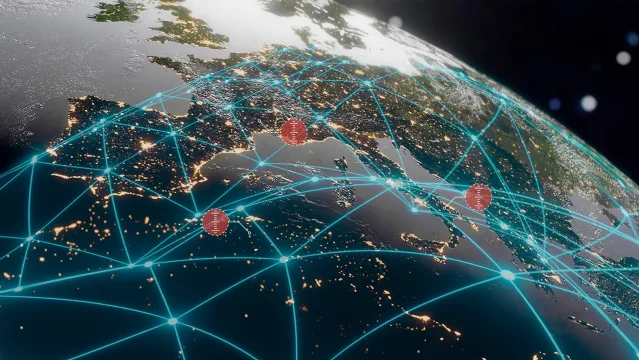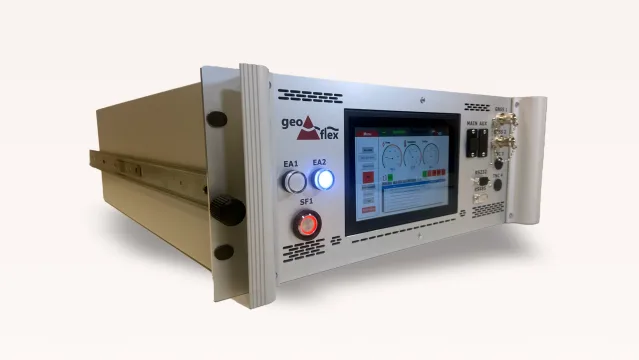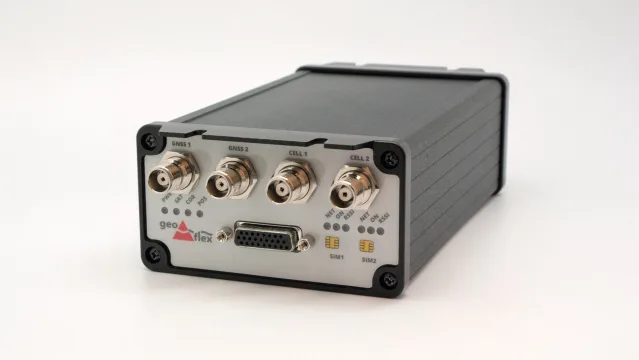Digitization of Railway Operations with Accurate Positioning
The railway sector is undergoing a major digital transformation with precise GNSS positioning is at its core. Geoflex’s global hypergeolocation services offer a unique opportunity to modernize railway operations by enhancing capacity, safety, and efficiency, even in areas with limited or no terrestrial infrastructure.
In Europe, this transformation is being driven by the adoption of the ERTMS (European Rail Traffic Management System) standard. A key innovation is the shift from fixed blocks to moving blocks, enabling trains to travel closer together safely and efficiently. This shift depends on robust, continuous, and accurate positioning of trains.
It also contributes to maintaining unprofitable rural railway lines, which is a major political issue in France and across Europe. These lines are essential for rural communities, and their closure increases dependence on cars. Small railway lines structure mobility, foster connectivity, and support local, economic, and tourism development. However, their funding, provided by regional authorities, is limited. Only the reduction of infrastructure costs made possible by Geoflex’s precise onboard positioning will ensure their preservation or reopening.
Beyond safety-critical applications, precise GNSS positioning is also essential for improving predictive maintenance, asset management, passenger information systems, and trackside worker safety.
Safety positioning: Accurate, robust, open and universal positioning for railways operations
Traditional train positioning systems rely heavily on costly, maintenance-intensive trackside infrastructure. Geoflex offers a scalable alternative: a universal, open, and resilient GNSS correction service that supports real-time, onboard train localization even in GNSS-challenged environments like tunnels or dense urban areas.
By integrating Geoflex’s GNSS corrections with inertial sensors and odometers, a hybrid navigation system is created that maintains centimeter-level accuracy, even during brief GNSS outages. This is crucial for enabling:
- Moving block operations, reducing train headways and increasing line capacity
- Accurate train separation, shunting operations, and collision prevention
- ERTMS Level 3 readiness and interoperability across European rail networks
- Lower-cost deployment, especially on low-density or rural lines, by minimizing trackside equipment
This aligns with Europe’s rail modernization goals: replacing legacy failsafe systems with interoperable, GNSS-based solutions.
One system, multiple Benefits
Passenger Information Systems
Real-time train location enables accurate ETA forecasts, platform management, and multimodal travel updates. Geoflex’s high-precision positioning supports enhanced journey information for both passengers and intermodal mobility platforms.
Trackside Personnel Protection
Track maintenance and inspection crews operate in hazardous environments. By equipping workers with GNSS-enabled safety gear (e.g., connected vests or personal trackers), site operators can Automate safety protocols by setting up Geofence of danger zones and proximity alerts for oncoming trains
This significantly reduces accident risks and improves compliance with worker safety regulations.
Geoflex products and services for Railway can be deployed on edge devices, onboard computers, or central supervision systems, supporting a range of railway-specific configurations and legacy systems for better interoperability across countries and manufacturers.
Key Benefits
ERTMS Compatibility
Supports moving block operations and digital signaling modernization
Compatible with Railway Safety standards
Reliable localization for both trains and trackside personnel
Global Coverage with Local Accuracy
High-integrity corrections, even in rural or remote segments
Reduced Infrastructure Costs
Minimizes need for expensive fixed trackside installations


